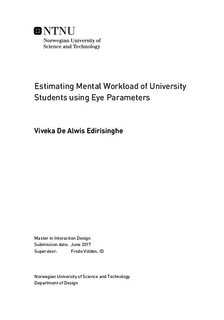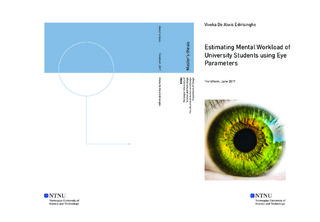| dc.description.abstract | Estimating mental workload using eye parameters in different fields has become a
significant study focus in the area of research. It is vital to discover the most reliable
eye parameter/parameters that can be used to estimate mental workload. In
this study, N-back tasks with four difficulty levels were designed to induce mental
workload for a sample of 21 university students at NTNU Gjøvik. 17 eye parameters
were measured using SMI RED250mobile Eye Tracker at a sampling rate of 250 Hz.
Analyzed data indicate that peak fixation duration is the most suitable eye parameter
to estimate mental workload. It has a negative relationship with the mental
workload, where higher peak fixation duration can be observed at lower mental
workload and lower peak fixation duration at higher mental workload. Moreover,
blink frequency, blink count, peak blink duration, and pupil diameter show a significant
positive relationship to the mental workload. Most of the saccade parameters
failed to show a significant relationship, while fixation frequency, fixation duration,
fixation count, blink duration, saccade velocity, and peak saccade amplitude
showed a partial relationship with the mental workload. | |

